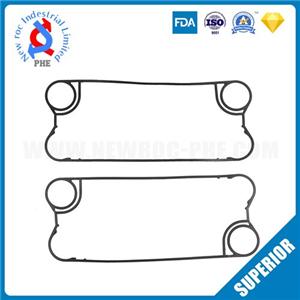The temperature and pressure requirements of plate heat exchangers
Plate heat exchangers have been widely used in many industries, and are now widely used in many industries such as power engineering, shipping, metallurgy, petroleum, chemical, food and light industry. For the temperature and pressure design requirements of the plate heat exchanger, today we will briefly explain to you:
The fully welded plate heat exchanger does not use any non-metallic sealing materials, and can have higher temperature and pressure resistance. It is suitable for extreme working conditions with working temperature of 300℃ and pressure of 3.0Mpa. The normal working temperature of the detachable plate heat exchanger is less than 150℃ (related to the performance of the sealing material), and the pressure is less than 1.6Mpa.
In addition, the plate heat exchanger unit is easy to increase or decrease the heat exchange area. For the shell-and-tube heat exchanger, it is almost impossible to increase the heat transfer area of the original heat exchanger when the liquid processing capacity needs to be increased. The heat transfer area is easily increased, thereby increasing the processing capacity.
Only the shell plate of the heat transfer plate of the plate heat exchanger is exposed to the atmosphere, therefore, the heat dissipation loss is negligible, and no heat preservation measures are required. One of its features in terms of operation and maintenance is that it is relatively easy to assemble and disassemble, and it does not even need to be completely disassembled. The plate can be taken out to clean, replace the gasket, and even replace the plate by loosening the compression bolt. This is particularly important for materials that are prone to deposits in the heat exchange medium. Allowable temperature and pressure: It uses the gasket between every two plates to prevent material leakage, so the total length of its sealing periphery is very long, and preventing gasket leakage is an important part.
The temperature, pressure and chemical stability that the gasket can withstand often become the temperature and pressure limits of its use and the allowable range of materials. In addition, due to the small gap between the heat transfer surfaces and the unevenness on the heat transfer surface, the pressure loss is greater than that of the traditional smooth. In addition, the Tianjin plate heat exchanger bears lower working pressure.




